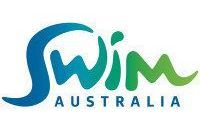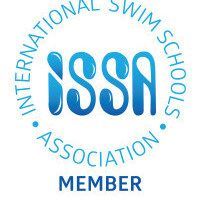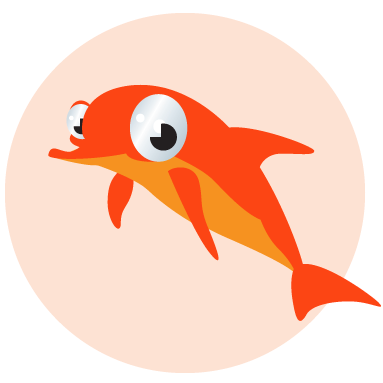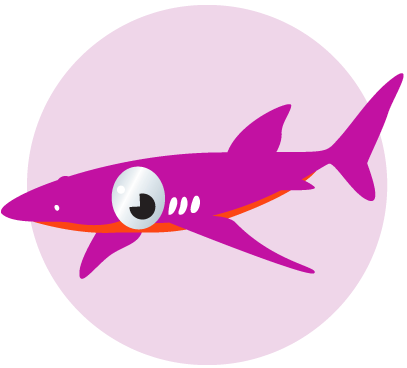Towards a Drowning-Free Nation: Australia 2025
357 people drowned in 2024-25 - the highest toll in more than 20 years
After two decades of progress, Australia’s drowning rate is rising again. This analysis examins who is most at risk, where swim access is lacking, and what we can do next. We will focus on early-years lessons, older adults, low-income families, and overseas-born individuals
Published by Aquatots, a leading swimming instruction school in Canberra, Australia, on November 7, 2025, and updated on November 28, 2025
Key Findings
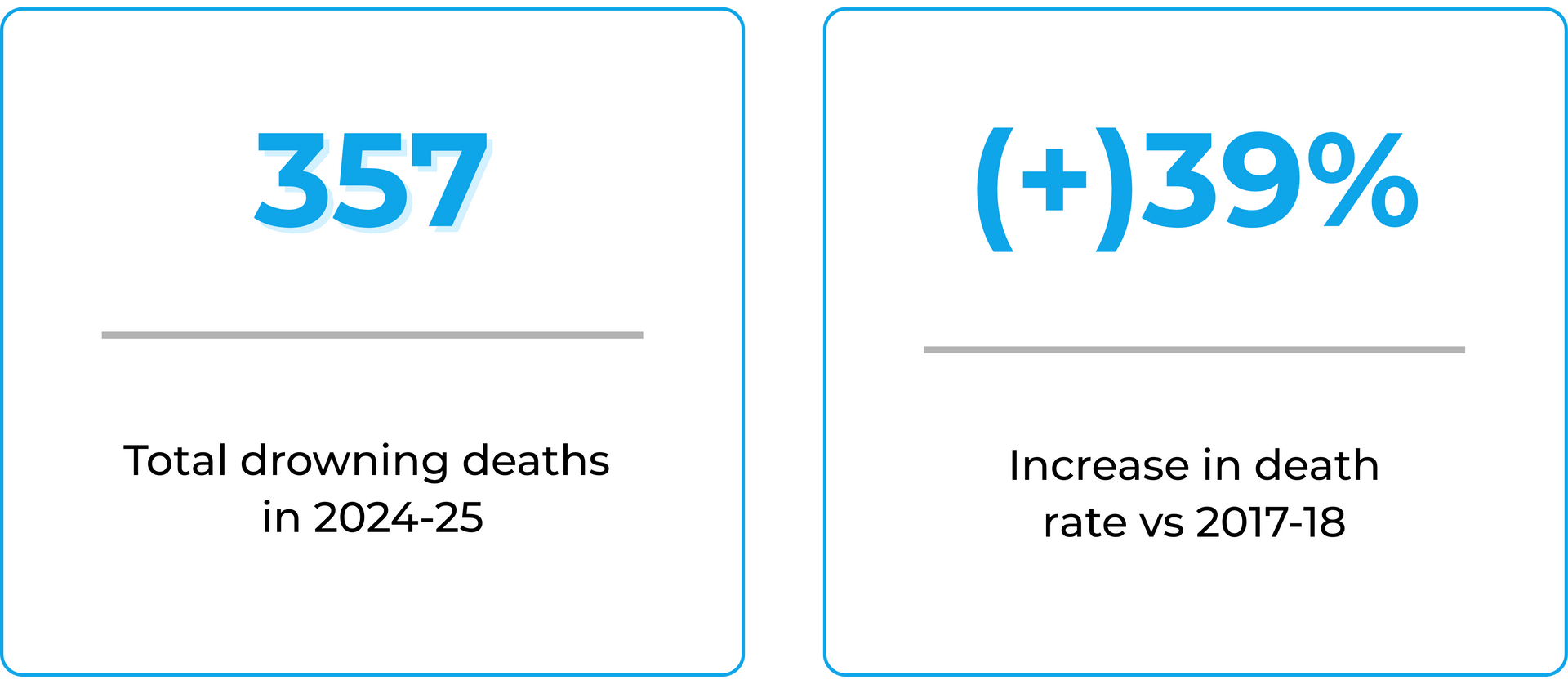
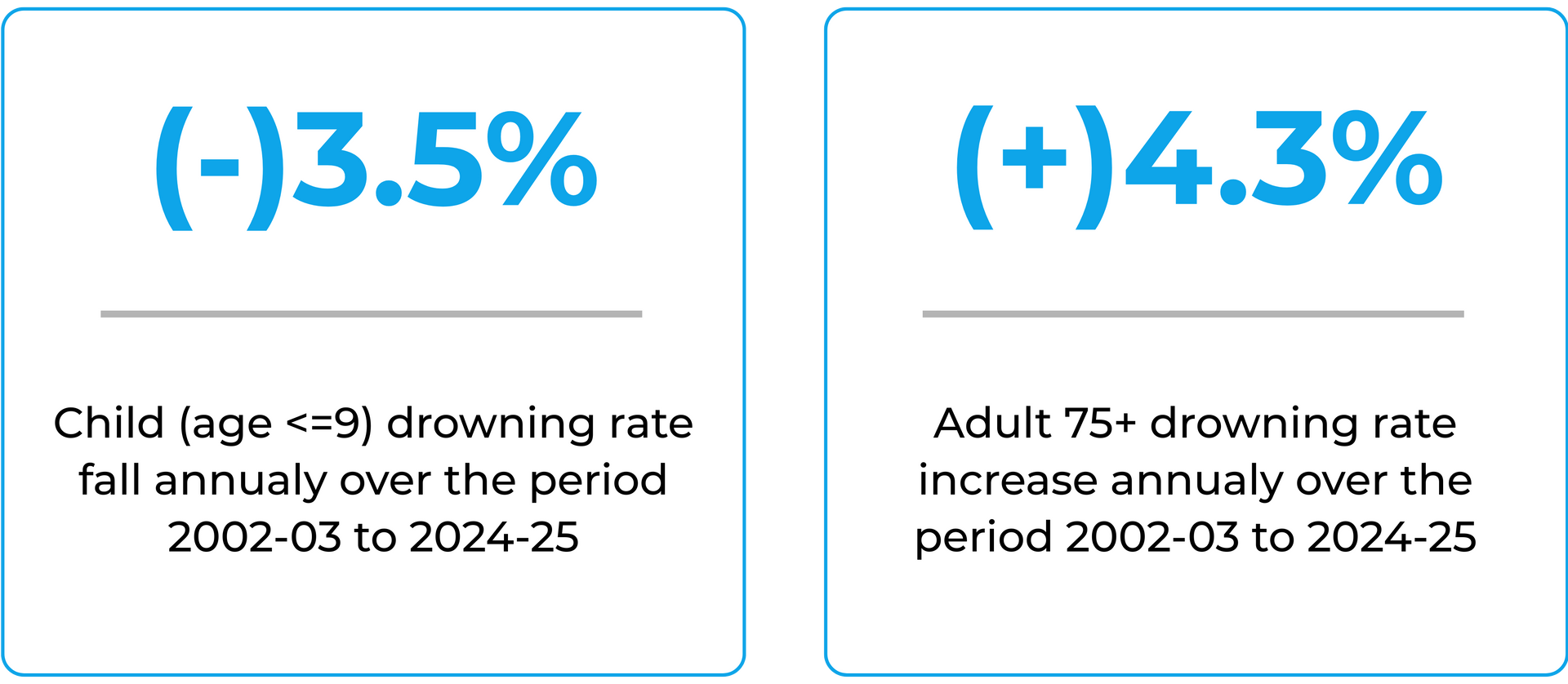
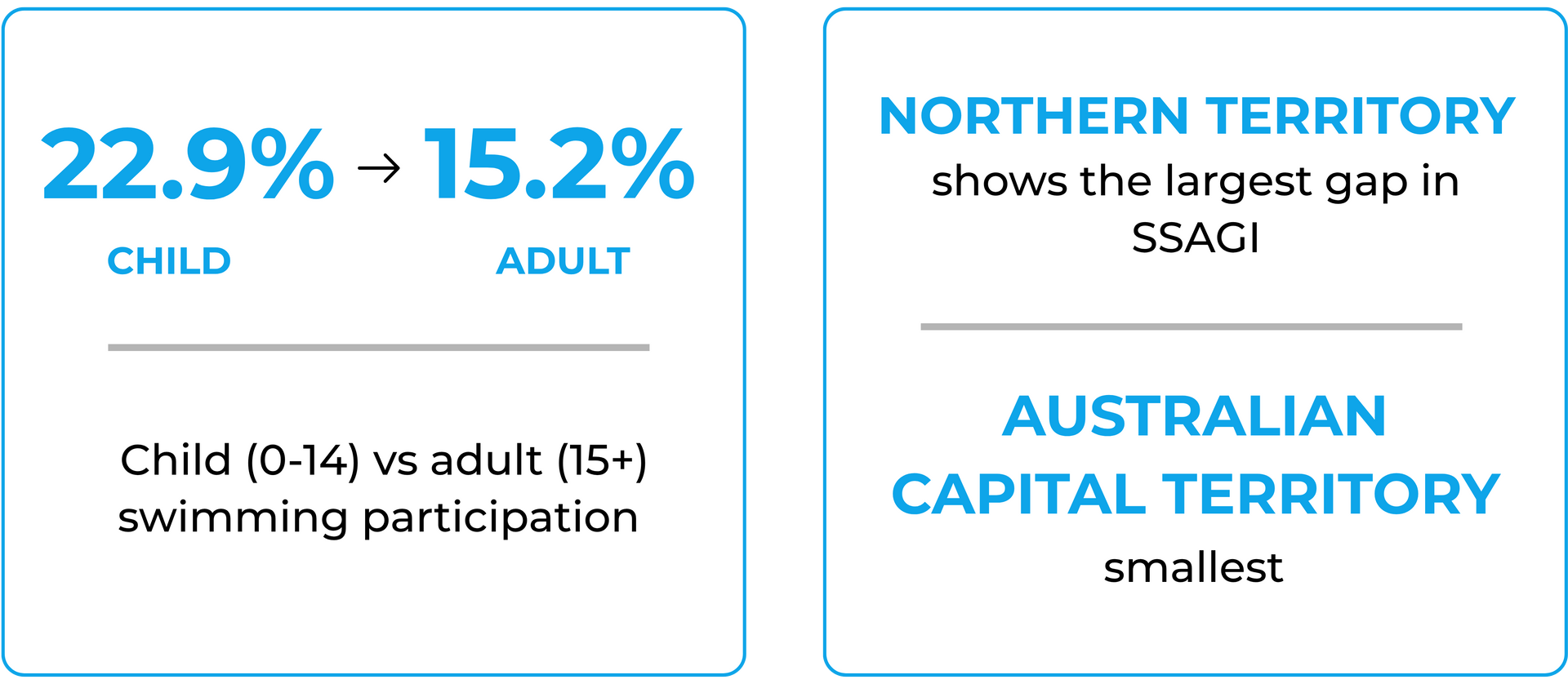
Data Source - Towards a Drowning-Free Nation, Australia 2025, Prepared by Aquatots; Royal Life Saving National Fatal Drowning Database; NATIONAL DROWNING REPORT, Royal Life Saving Australia, several years; AusPlay 2024; Australian Bureau of Statistics
- The drowning rate fell from 1.63 deaths per 100,000 people in 2002-03 to below 1.0 in 2017-18, but has since risen by almost 39% to 1.31 in 2024-25.
- In the past 20 years, people born overseas have often had a higher share of drowning deaths than their population size. In some years, they accounted for up to 40% of all drowning deaths.
- The Swim Safety & Access Gap Index (SSAGI) reveals where safety needs exceed lesson availability. The Northern Territory has the largest gap, while the ACT has the smallest.
Overseas-born Australians are a key focus of our analysis ahead of National Water Safety Day, 1st December, 2025
- From 2005-06 to 2023-24, people born overseas accounted for over 30% of all drowning deaths.
- In the late 2010s, they were around 30% of the population, but in some years close to 40% of drowning deaths.
- Between 2013-14 and 2022-23, the average annual drowning rate was 1.04 deaths per 100,000 people for Australian-born residents, and 1.30 for overseas-born residents.
- China, India and Nepal together make up almost one in five overseas-born drowning deaths (2013-14 to 2022-23).
Data Source
NATIONAL DROWNING REPORT, Royal Life Saving Australia, several years; Royal Life Saving National Fatal Drowning Database Dashboard; 34090DO001_2024 Australia's population by country of birth 2024, Estimated resident population by country of birth - as at 30 June, 1996 to 2024, Released at 11:30 am (Canberra time) 30 April 2025, Australian Bureau of Statistics; A 10 YEAR NATIONAL STUDY OF OVERSEAS BORN DROWNING DEATHS, 2005/06 to 2014/15, Royal Life Saving Australia; Drowning Among Multicultural Communities in Australia, AN UPDATE: 2013/14 TO 2022/23, Royal Life Saving Australia
"People born overseas might have a higher risk of drowning. This is because they may not have learned swimming or water safety before coming to Australia. Creating accessible and inclusive programs for migrants in Australia is crucial. These programs help them learn about and respect the risks of our beautiful aquatic environments."
- Alena Sarri
Swimming enthusiast, educator, and advocate for child safety
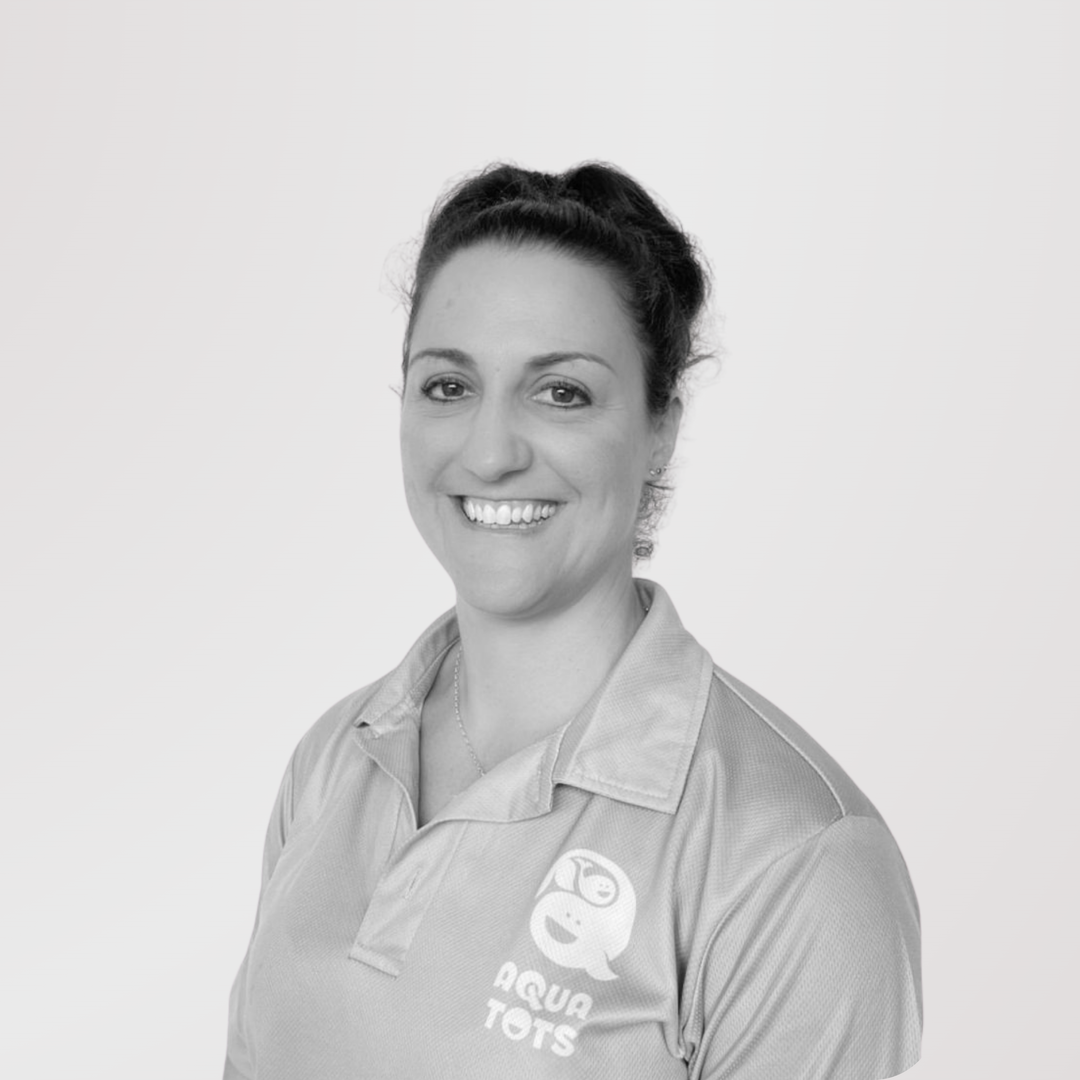
Swim Safety & Gap Index (SSAGI)
A higher SSAGI score means a bigger gap between safety, need, and lesson capacity. This includes risk, access shortages, and demand.
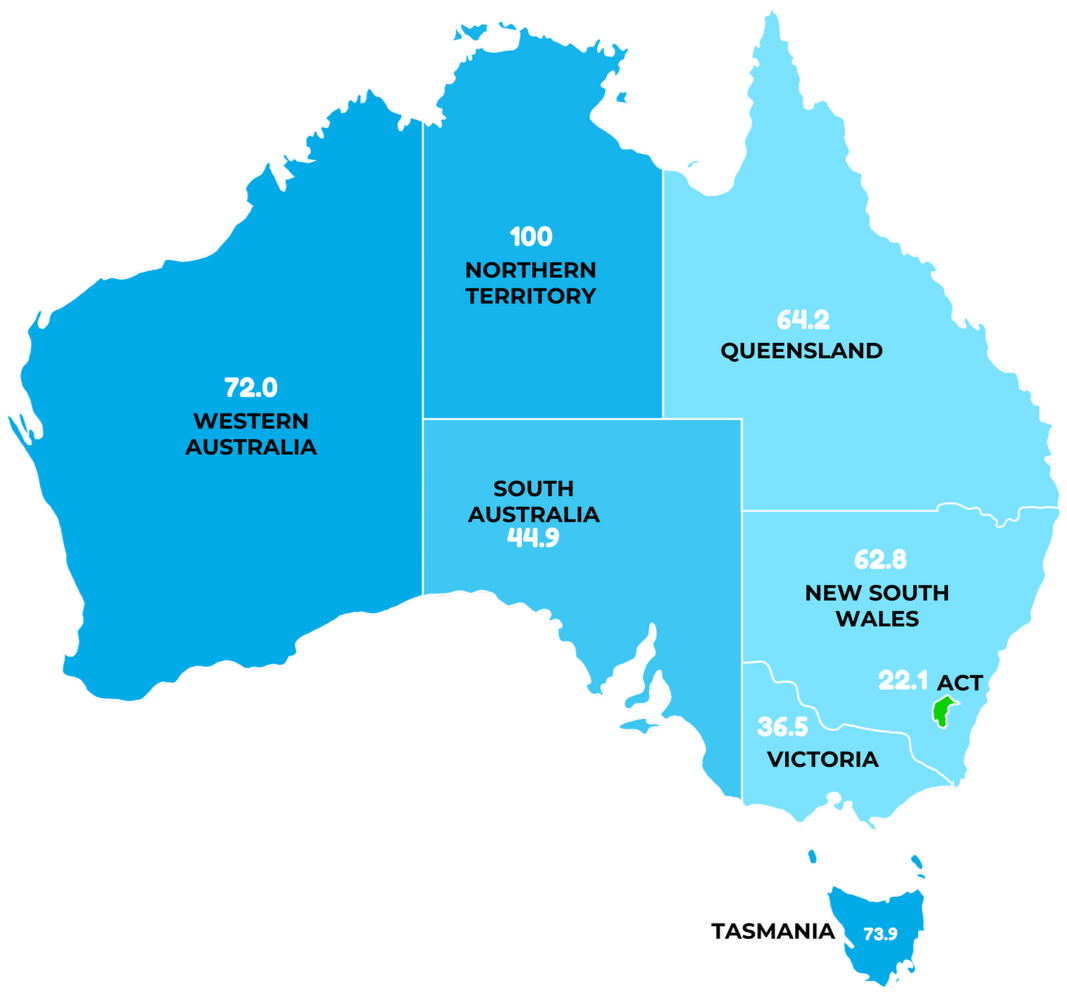
The Swim Safety & Access Gap Index (SSAGI) highlights places where safety needs outpace lesson capacity. NT shows the largest gap; ACT shows the smallest.
Why it matters
- Ageing Australians now make up a rising part of deaths. So, we need to design programs that go beyond early years.
- Swimming participation drops sharply after adolescence. This suggests that retention, not just entry-level lessons, is key.
- Households with higher incomes buy pool time. Only 14.2% of children from households with a family income of up to $40K per year take part in swimming.
- People born overseas are often over-represented in drowning deaths, so CALD-specific programs and messaging are essential.
- state-by-state gaps unlock targeted policy
“We’re committed to the nation’s goal of being drowning free by 2030. We must keep teens engaged, re-activate adults, support under-resourced families, and make water safety part of everyday life.”

- Alena Sarri
Swimming enthusiast, educator, and advocate for child safety
The Way Forward
Six National Priorities for a Drowning-Free Future
Step 01
Keep Australians swimming at every age by building lifelong pathways that re-engage teens and adults, not just children.
Step 02
Make survival skills standard by teaching stroke and safety in equal measure across every swim program.
Step 03
Expand lesson capacity through more instructors, extended hours, and regional investment to meet national demand.
Step 04
Protect older Australians with tailored safety and confidence programs designed for swimmers aged 55+.
Step 05
Ensure equity and affordability so that income or postcode never determine access to swim education.
Step 06
Improve national data and tracking to measure progress, guide funding, and prevent future risk.
Using our work
Aquatots Research & Data Team's work is meant to be shared and used widely. You do not need to seek our permission to reuse our article, charts, data, you just need to provide credit - http://www.aquatots.com.au/drowning-free-nation-australia-2025-report
Certifications

